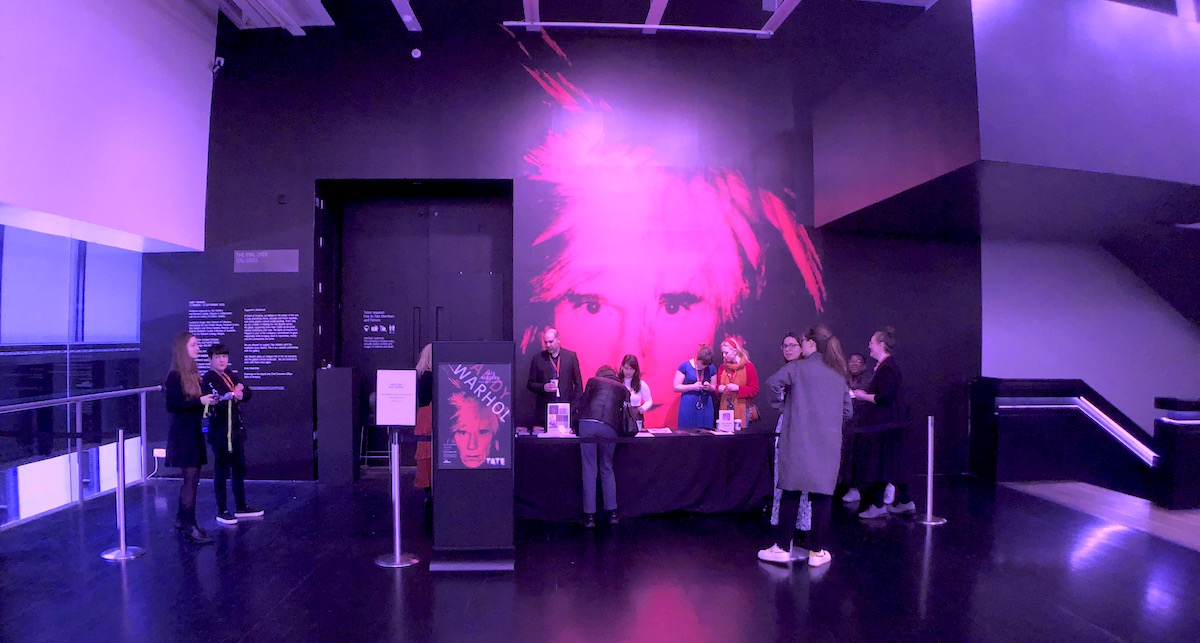The Blessed Waldy – yes, it was he – appeared not once but twice in the Sunday Times last weekend. One-piece, in the Culture section, about a virtual exhibition of kimonos at the V&A Museum, did not detain me long. What it demonstrated was the near-desperate search for anything art-y to review here in London, even though lock-down is now starting to ease. The other piece, in the Magazine, was more substantial. Entitled ’20 Years of Wow,’ it celebrated two decades of activity in Tate Modern.
The world has changed, and Tate Modern’s brief heyday may be irretrievably over – ELS
Waldy had been an entranced spectator at its transformation from being a defunct power station to being a temple for Modern and Contemporary Art (most of all the latter), which attracts, or attracted until very recently, around six million visitors a year. As he noted “Tate Modern is easily the most popular gallery of modern art in the world… For a location that consists mostly of open spaces, lightly sprinkled with the odd moment of art, that is some achievement.”
Is this success likely to continue, once the coronavirus epidemic is over? That is to say if it is ever completely over. Or will the ten years during which Tate Modern flourished so magnificently come to represent a lost, never fully recoverable epoch?
There are several things to be said about Tate Modern. Some of these Waldy dealt with, some he didn’t. He noted, for example, that the museum doesn’t have an absolutely first-class permanent collection. There are better ones, dealing with the same epoch, in the Museum of Modern Art in New York and in the Pompidou in Paris. It doesn’t offer anything like a connected narrative about how the visual arts developed during the 20th century, and during the earliest years of this one. It has made up for this, at least in part, by series of spectacular installations. Well remembered, for example, were those of work by Louise Bourgeois. Ai Weiwei and – most of all, perhaps – the Weather Project by Olafur Eliasson. However, as Waldy notes, Tate Modern has, over the ten years of its existence gradually sidled towards more conventional retrospectives by big-name international artists. Sprinkled among these were exhibitions by increasingly-recognised women artists: Frida Kahlo, Sonia Delaunay, Yayoi Kusama, Dorothea Tanning.
What Waldy didn’t discuss was the kind of public that Tate Modern attracted. Part of it, indeed, consisted of the ‘younger people’ that official museums now pride themselves on attracting. But in normal times, as with all institutions of this kind, attendances were modified by circumstances. Opening hours are generally 10 a.m. to 5 p.m. This means that Monday to Friday attendees tended to be either the very young, shepherded round by their mentors. Or the safely retired – the over-60s. And, since London has been recently a major tourist destination, there were herds of tourists, for whom a visit to Tate Modern was a must-see part of their trip, an essential London experience. The British 18-to-35year olds tended to be present only at weekends. Art museums, unlike like theatres, cinemas or concert halls, are not usually open after working hours.
One thing one can say about the present situation is that, even if things return to something resembling pre-virus normal, tourism to London is going to be hard hit. There is, in addition, something else. I have just been looking at a list of guidance for galleries as they re-open just published on the web. It makes formidable reading. If the recommendations given, there were to be implemented at Tate Modern, jolly visits there bouncing in an out of installations designed to ‘give the visitor an experience’ would be things of the past, to be looked back upon with regretful nostalgia. To many people, it will seem much easier in those circumstances to look for a version of the same kind of experience using a laptop or an i-pad. The world has changed, and Tate Modern’s brief heyday may be irretrievably over.
Indeed the heyday of official, as opposed to commercial, galleries in London may now be past. In some cases, the very existence of these institutions is under threat, The Hayward Gallery on the South Bank and the Design Museum are cases in point.
Some great galleries will go soldiering on. The National Gallery in Trafalgar Square is all set to re-open its wonderful Titian: Love, Desire, Death exhibition next month. The irony is that few exhibitions of painting, old or new, could be more politically incorrect. The NG’s upcoming Raphael how has been postponed until 2022. There is as yet no news of their planned exhibition of work by Artemisia Gentileschi.
Read More About Museum
Visit Museum

